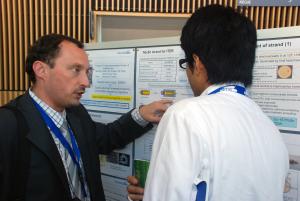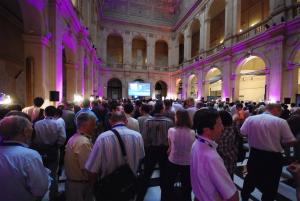Magnet family convenes in Marseille
In the year when the world celebrates the 100th anniversary of the discovery of superconductivity and the 50th anniversary of applied superconductivity, ITER—as the project that will push the boundaries of existing magnet technology in a wide variety of areas—had the honour of hosting the MT conference. And with a record number of 935 participants, 979 submitted abstracts, 632 papers, 600 posters and 130 oral presentations, this 22nd edition of the Magnet Technology conference broke all records. "I think what we're seeing here is genuine growth in the interest in magnet technology," conference Chairman Neil Mitchell stated. "This might be due to the steady climb in commercial activity for magnets which is about 20 percent per year," Mitchell added.
Fifty years later, the technology is well established, but R&D never stops; this 22nd edition of the MT conference featured papers on the development of applications using the new generation of high temperature superconductors. "The MT is a forum for exchange of information where, in particular, the companies working on industrialization of discoveries interact with the clients who want to use the products," explained Neil Mitchell. "It's not only new discoveries, but also improved techniques for manufacturing old technologies that comes up. The interfacing nature of the conference makes it popular."
- Yukikazu Iwasa, from MIT's Francis Bitter Magnet Laboratory, for his pioneering work on techniques for making superconducting joints between NbTi and Nb3SN wires (and, more recently, MgB2 wires)
- Alvin Tollestrup, from the Fermi National Accelerator Laboratory, for his efforts in leading the pioneering design, testing and commissioning of 1,000 superconducting magnets for the Tevatron at Fermi Lab
- Bernard Turck, from the CEA in Cadarache, for the invention of the Tore Supra conductor and his major role in the commissioning of the Tore Supra superconducting magnet system which has been in operation for more than 20 years




